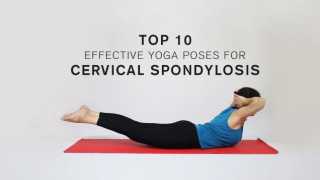7 years ago
Yoga and You

How to do Shoulder stand Sequence
7 years ago | Yoga and You
DESCRIPTION
Sarvangasana or the shoulder stand pose comes from the Sanskrit words – ‘Sarva’ which means ‘all’ and ‘Anga’ which means ‘part’. Sarvangasana involves all parts of the body as the name suggests. Sarvangasana is one of the main inverted asanas which gives plenty of health benefits. This posture is otherwise referred to as the Queen of Asanas. Dhivya from Dhivyam yoga shows us How to do Shoulder-stand Sequence.
How to:
1. Start by laying down on a yoga mat and bend your legs at the knees.
2. Pull your legs closer to your upper body and then lift them upwards.
3. Slowly lift your upper body off the ground, placing your hands at your hips, with your elbows placed strongly on the mat, to support your body.
4. Push your hips upwards so your entire body (upper body and legs) are aligned in a straight line and form a 90 degree angle with the floor.
5. Bend your legs lower such that your feet rest behind your head. Interlock the finger of your hands and place them against our back to maintain support.
6. Lower your arms against the mat and stretch and straighten your arms and legs.
7. Now, slowly bend your legs and bring them closer to your face so that both your knees lie on either side of your head, touching your shoulders.
8. Straighten your back. Bend your legs upwards and use your hands to hold them in place. Then let them fall back to the ground, while holding on to your toes using your hands to hold your posture.
9. Hold the position for a few seconds.
10. Now, slowly let go of your toes, lift your legs over your head and bending them at the knees being it back down to the ground.
11. Now, fold your legs into a lotus pose (Padmasana) and lift your upper body, laying your crown on the mat. Bring your hands together above your chest.
12. Hold this posture (Matsyasana) for a few seconds. Slowly bring your body back down and unfold your legs.
13. Relax in the Shavasana pose.
Why to:
1. It calms the nerves of our body.
2. It aids in fighting digestive disorders.
3. It reduces anxiety, insomnia and irritability.
4. It regulates the functions of all the glands in the body.
5. It helps in fighting hair-fall, aids in weight loss, skin care and maintaining good eyesight.
Should be avoided by:
1. Women during menstruation.
2. Women during pregnancy.
3. High blood pressure patients.
4. People with glaucoma, acute thyroid problems, chronic neck conditions, shoulder injuries and retina problems.
5. Patients with heart problems, spinal problems and slip disk.
Best time:
The best time to perform any yoga posture is in the early morning hours. Yet, it is advised to perform yoga at least once a day, regardless of the time. However, make sure to practice yoga at least 3 hours after your meals.
Watch more: http://21frames.in/yogaandyou Follow us on Facebook: http://facebook.com/VentunoYoga Subscribe us on YouTube: http://youtube.com/user/VentunoYoga Follow us on Instagram: http://instagram.com/ventunoyoga Follow us on Twitter: http://twitter.com/VentunoYoga A Ventuno Production http://www.ventunotech.com
How to:
1. Start by laying down on a yoga mat and bend your legs at the knees.
2. Pull your legs closer to your upper body and then lift them upwards.
3. Slowly lift your upper body off the ground, placing your hands at your hips, with your elbows placed strongly on the mat, to support your body.
4. Push your hips upwards so your entire body (upper body and legs) are aligned in a straight line and form a 90 degree angle with the floor.
5. Bend your legs lower such that your feet rest behind your head. Interlock the finger of your hands and place them against our back to maintain support.
6. Lower your arms against the mat and stretch and straighten your arms and legs.
7. Now, slowly bend your legs and bring them closer to your face so that both your knees lie on either side of your head, touching your shoulders.
8. Straighten your back. Bend your legs upwards and use your hands to hold them in place. Then let them fall back to the ground, while holding on to your toes using your hands to hold your posture.
9. Hold the position for a few seconds.
10. Now, slowly let go of your toes, lift your legs over your head and bending them at the knees being it back down to the ground.
11. Now, fold your legs into a lotus pose (Padmasana) and lift your upper body, laying your crown on the mat. Bring your hands together above your chest.
12. Hold this posture (Matsyasana) for a few seconds. Slowly bring your body back down and unfold your legs.
13. Relax in the Shavasana pose.
Why to:
1. It calms the nerves of our body.
2. It aids in fighting digestive disorders.
3. It reduces anxiety, insomnia and irritability.
4. It regulates the functions of all the glands in the body.
5. It helps in fighting hair-fall, aids in weight loss, skin care and maintaining good eyesight.
Should be avoided by:
1. Women during menstruation.
2. Women during pregnancy.
3. High blood pressure patients.
4. People with glaucoma, acute thyroid problems, chronic neck conditions, shoulder injuries and retina problems.
5. Patients with heart problems, spinal problems and slip disk.
Best time:
The best time to perform any yoga posture is in the early morning hours. Yet, it is advised to perform yoga at least once a day, regardless of the time. However, make sure to practice yoga at least 3 hours after your meals.
Watch more: http://21frames.in/yogaandyou Follow us on Facebook: http://facebook.com/VentunoYoga Subscribe us on YouTube: http://youtube.com/user/VentunoYoga Follow us on Instagram: http://instagram.com/ventunoyoga Follow us on Twitter: http://twitter.com/VentunoYoga A Ventuno Production http://www.ventunotech.com





















